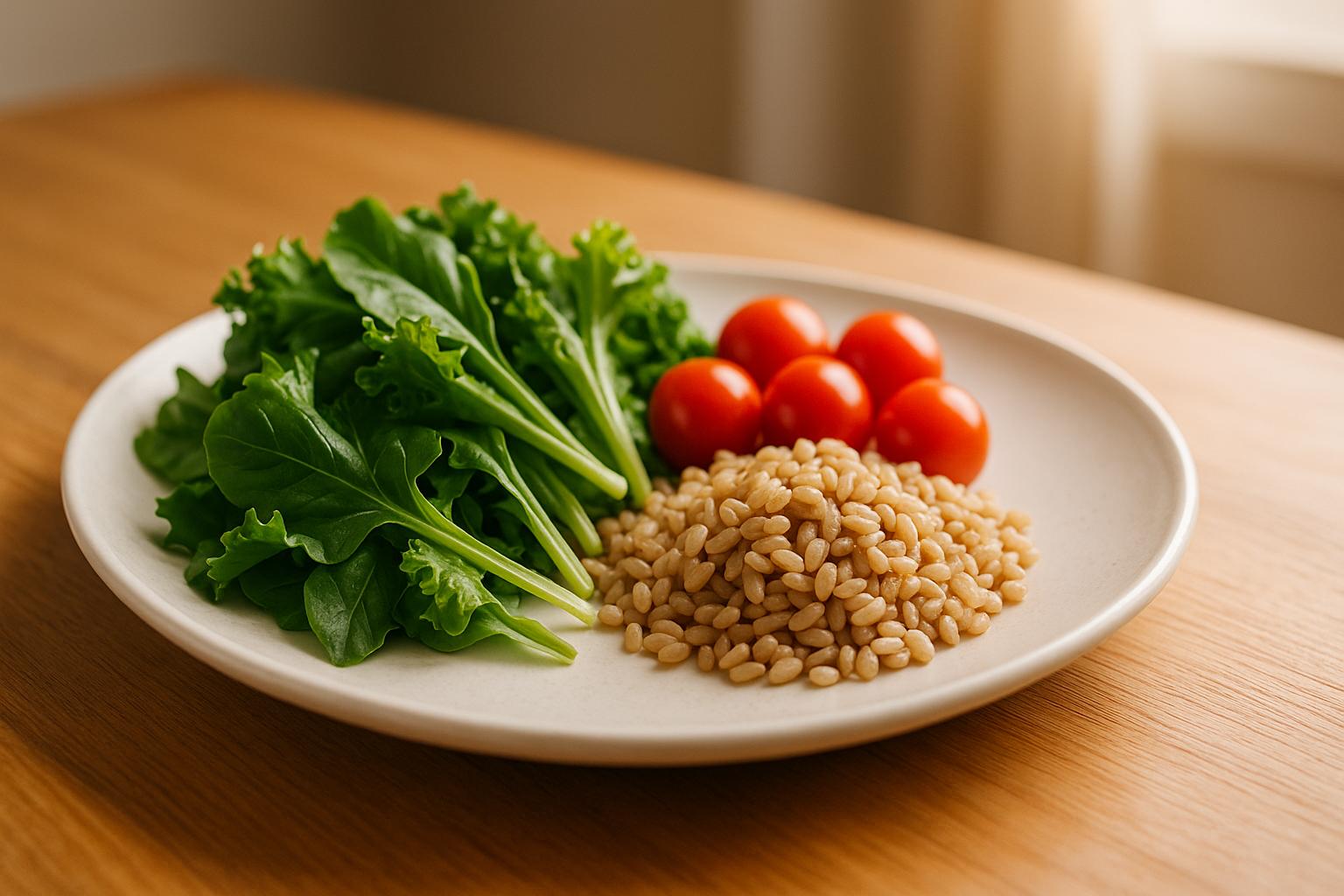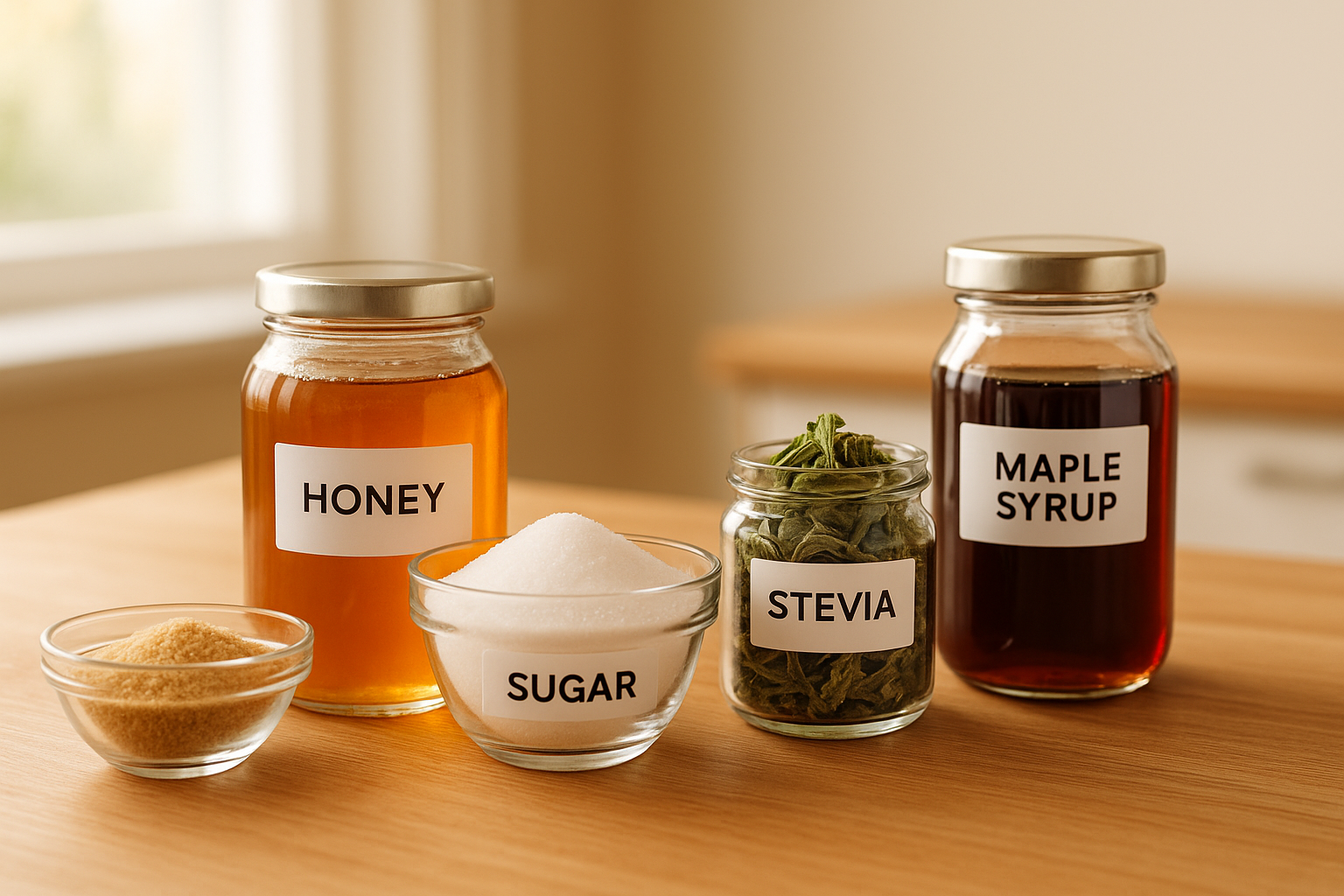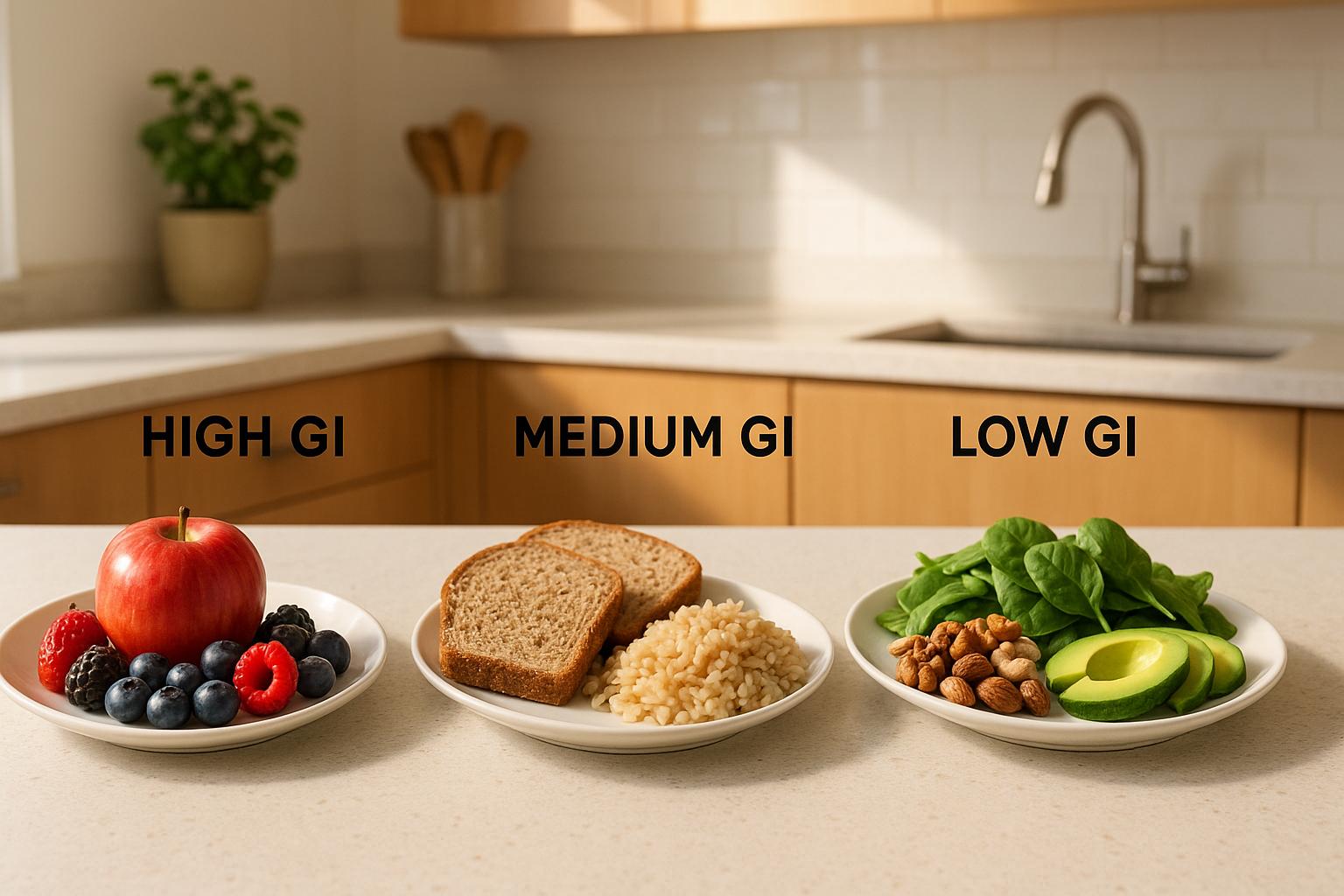Want steady focus and mental energy? Start by managing your glycemic load (GL). Here's what you need to know:
- What is GL? It measures how a food affects blood sugar levels considering both its glycemic index (GI) and carb content.
- Why it matters: High-GL foods cause spikes and crashes in blood sugar, leading to fatigue and poor focus. Low-GL foods provide steady energy and better concentration.
- Best practices:
- Aim for post-meal glucose levels between 90–130 mg/dL for optimal brain function.
- Choose low-GL meals and snacks for sustained energy.
- Tools like Logi can help you track GL, scan meals, and find better food options.
Quick Comparison: High vs. Low GL Diets
| Aspect | High GL Diet | Low GL Diet |
|---|---|---|
| Blood Sugar | Quick spikes, rapid drops | Gradual rise, steady fall |
| Energy Levels | Unpredictable, prone to crashes | Consistent and reliable |
| Mental Focus | Hard to maintain | Easier to sustain |
Start tracking your meals, review insights, and adjust your choices to keep your brain fueled and focused all day.
4 Eating Habits for Greater Brain Health | Glucose Goddess
Blood Sugar Levels and Brain Function
Let’s break down the connection between glycemic load (GL), glycemic index (GI), and how they influence brain energy.
Glycemic Load vs. Index: What’s the Difference?
Here’s the formula: GL = GI × carbs per serving. While GI measures how fast a food raises your blood sugar, GL also considers the amount of carbs in a serving. This makes GL a more accurate way to estimate how a meal impacts your blood sugar - and, by extension, your brain’s energy supply.
Using GL, you can better predict how your meals will influence focus and mental energy throughout the day.
How GL Affects Your Brain
High-GL meals can cause sharp blood sugar spikes, leading to poor focus and fatigue. On the other hand, low-GL meals help keep blood sugar steady, improving concentration and mental stability. Tools like Logi’s meal scanner can identify high-GL foods, track your unique glycemic responses, and recommend low-GL options to support consistent mental energy.
Research on GL and Brain Performance
Research shows a connection between a meal's glycemic load (GL) and cognitive function. Meals with a lower GL help maintain steady blood sugar levels, which can lead to improved mental sharpness.
Mental Performance: High vs. Low GL Foods
Meals with a high GL cause rapid blood sugar spikes followed by crashes, which can hurt focus and attention. On the other hand, low-GL meals provide a slow and steady release of glucose, helping maintain concentration and reduce fatigue. Logi's GL scanner can help you compare the GL values of different meals, making it easier to choose foods that support consistent energy levels. The next step? Defining glucose targets for optimal brain activity.
Best Blood Sugar Ranges for Brain Health
For better brain health, aim for post-meal glucose levels between 90–130 mg/dL. This range supports neurotransmitter activity and energy levels. Logi's tracking tools can help you monitor your body’s response to meals, identify your ideal glucose range, and fine-tune your diet for better results.
sbb-itb-0899721
Daily GL Management Steps
To maintain optimal post-meal glucose levels (90–130 mg/dL) and keep your brain fueled, try incorporating these daily practices.
Choose Low-GL Foods for Steady Energy
Opt for foods that release glucose gradually to support better focus throughout the day. Tools like Logi's low-GL alternatives finder can help you make smarter choices.
Plan Meals to Keep Blood Sugar Balanced
Track your meals using a daily meal tracker. This lets you log what you eat, monitor totals, and identify any blood sugar spikes. Adjust portion sizes or swap out certain foods to keep your levels steady. Linking your meal plans to real-time data ensures you're staying within your target range.
Effective GL Tracking Steps
Reaching your glucose goal of 90–130 mg/dL requires consistent tracking. Here are three key steps:
- Scan your meals before eating to avoid potential spikes in blood sugar.
- Log every meal to create a reliable data set.
- Review your insights regularly to fine-tune your food choices.
These strategies help maintain the steady glucose levels your brain relies on for peak performance.
High vs. Low GL Diet Effects
High-GL diets cause quick blood sugar spikes followed by crashes. This can lead to mental fog, uneven focus, and fluctuating energy levels. On the other hand, low-GL diets provide a steady release of glucose, supporting consistent attention and energy during demanding activities.
Comparison of High vs. Low GL Diets
| Aspect | High GL Diet | Low GL Diet |
|---|---|---|
| Blood Sugar Pattern | Quick spikes, rapid drops | Gradual rise and steady fall |
| Energy Levels | Unpredictable; prone to crashes | Consistent and reliable |
| Mental Focus | Hard to maintain | Easier to sustain |
Logi's GL scanner can help you monitor how different foods impact your energy and focus. Check your results to identify patterns and make better dietary choices.
Main Points and Next Steps
Keeping your glycemic load (GL) in check helps maintain steady brain energy, avoid mental fog, and stay focused. To make this a part of your daily life, here are three straightforward actions you can take:
Steps to Get Started
-
Track Your Daily Meals
Use Logi's GL scanner and tracker to log your meals and see how they impact your blood sugar levels. -
Review Insights
Analyze the data to identify foods that cause blood sugar spikes and find better low-GL alternatives. -
Adjust Your Choices
- Breakfast: Go for low-GL options to start your day with steady energy.
- Lunch: Opt for low-GL meals to avoid that midday energy crash.
- Snacks: Stick with low-GL snacks to keep your energy up throughout the day.



